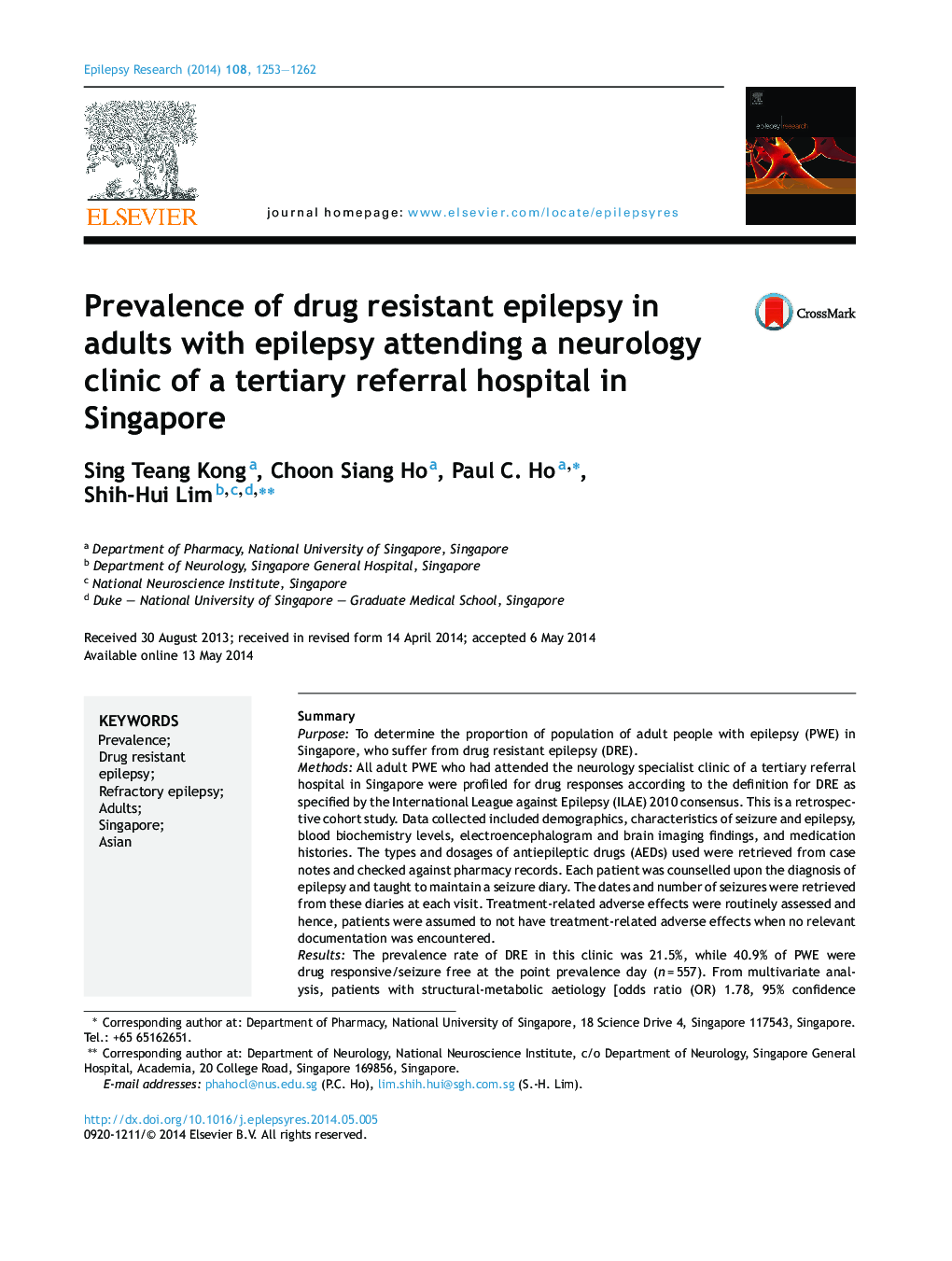| کد مقاله | کد نشریه | سال انتشار | مقاله انگلیسی | نسخه تمام متن |
|---|---|---|---|---|
| 3052048 | 1186072 | 2014 | 10 صفحه PDF | دانلود رایگان |
• Practicality of the recent ILAE consensus on DRE definitions was confirmed.
• 1 in 5 adult PWE in Singapore was found to have DRE.
• The relatively few numbers of Indian subjects may have masked its influence as risk factor for DRE in multivariate analysis.
SummaryPurposeTo determine the proportion of population of adult people with epilepsy (PWE) in Singapore, who suffer from drug resistant epilepsy (DRE).MethodsAll adult PWE who had attended the neurology specialist clinic of a tertiary referral hospital in Singapore were profiled for drug responses according to the definition for DRE as specified by the International League against Epilepsy (ILAE) 2010 consensus. This is a retrospective cohort study. Data collected included demographics, characteristics of seizure and epilepsy, blood biochemistry levels, electroencephalogram and brain imaging findings, and medication histories. The types and dosages of antiepileptic drugs (AEDs) used were retrieved from case notes and checked against pharmacy records. Each patient was counselled upon the diagnosis of epilepsy and taught to maintain a seizure diary. The dates and number of seizures were retrieved from these diaries at each visit. Treatment-related adverse effects were routinely assessed and hence, patients were assumed to not have treatment-related adverse effects when no relevant documentation was encountered.ResultsThe prevalence rate of DRE in this clinic was 21.5%, while 40.9% of PWE were drug responsive/seizure free at the point prevalence day (n = 557). From multivariate analysis, patients with structural-metabolic aetiology [odds ratio (OR) 1.78, 95% confidence interval (CI) 1.003–3.148], mental retardation [OR 2.51, 95% CI 1.073–5.863], psychiatric illnesses [OR 3.349, 95% CI 1.181–9.501] and pre-treatment seizure frequency of more than once monthly [OR 2.775, 95% CI 1.190–6.469] were found to be more likely to have DRE (p ≤ 0.05). Although the influence of Indian ethnicity on the risk of DRE was only found in the univariate analysis, it warrants investigation in a larger cohort.ConclusionThe findings may aid policy makers in designing treatment guidelines and allocating resources around PWE, with careful considerations that at any given time, 1 in 5 PWE have DRE.
Journal: Epilepsy Research - Volume 108, Issue 7, September 2014, Pages 1253–1262
